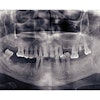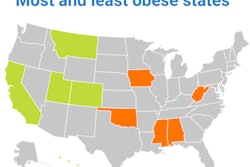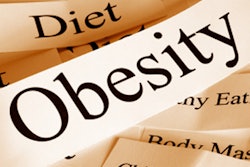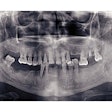
In this two-part series, a nurse practitioner and a dietitian share why it's important to screen kids for obesity within your dental practice and explain how to successfully do so. Part one focuses on why dental providers can -- and should -- do weight assessments.
Did you know elementary school-aged kids see their dentist more often than their primary care provider? That's why it's important for dental professionals to screen kids for childhood obesity, according to a well-attended session on nutrition at the recent 2016 ADA annual meeting in Denver.
In the session, presenter and nurse practitioner Elsie Stines, DNP, CRNP, explained that dentists share in the responsibility to help patients live wellness-focused lives, including maintaining a healthy weight. She discussed why body mass index (BMI) can be a good screening tool and when the tool can fall short.
"All healthcare providers, not just primary care providers, should be discussing BMI and healthy living," Stines said. "What goes in the mouth can affect oral health and overall health."
The role of dental providers in counseling
About 1 in 6 children and adolescents in the U.S. is obese, according to the U.S. Centers for Disease Control and Prevention (CDC). This is concerning because childhood obesity puts kids at risk for a whole slew of health problems, including type 2 diabetes, heart disease, periodontal disease, and depression. Kids who are obese tend to get bullied and miss more school days, and adults tend to have fewer years of advanced education and make less money.
While primary care providers do screen for obesity, kids between the ages of 6 and 12 are more likely to see their dentist than primary care provider, because schools don't have many vaccination or physical requirements for kids between these ages. This is also the age range when the peak number of children move from a healthy to an unhealthy weight.
"In the primary care office, we do a BMI screening, a nutritional assessment, and a physical assessment, but most kids are not going to their primary care provider often," Stines said. "You as dental providers have more access to children at this age."
She also noted that the American Academy of Pediatric Dentistry's ethics policy states that dentists have an "ethical obligation to provide therapy for patients with oral disease or refer for treatment patients whose needs are beyond the skill of the practitioner."
Stines mentioned that, since obesity is now considered a disease, practices should screen to see if kids fall within a healthy weight range and refer those who aren't to primary care providers for additional treatment.
Understanding BMI as a screening tool
Body mass index is the most effective screening tool to indicate a high level of body fat, according to Stines and the CDC. The tool classifies children and adults into four categories: underweight, healthy or normal weight, overweight, and obese.
For both children and adults, calculating BMI begins by using the following formula: weight in kilograms divided by [height in meters]2.
For adults, the number from that calculation falls into one of the four categories. But for kids, the number needs to be plotted along the CDC growth chart to establish which category a child falls into.
| BMI categories for children and adults | ||
| Category | Children and adolescents | Adults |
| Underweight | Less than the 5th percentile for kids of the same age and sex | Below 18.5 |
| Healthy or normal weight | The 5th percentile to less than the 85th percentile for kids of the same age and sex | 18.5-24.9 |
| Overweight | The 85th percentile to less than the 95th percentile for kids of the same age and sex | 25.0-29.9 |
| Obese | The 95th percentile or greater for kids of the same age and sex | 30.0 and above |
Since measuring BMI can be confusing, a number of tools and apps allow providers to input height, weight, and birthdate data, and then calculate the BMI. For example, the CDC has an online calculator both for adults and children.
However, BMI does have its shortcomings. Specifically, BMI is a screening tool, not a diagnostic tool, and so it's important to ask kids about their dietary habits in addition to finding out the child's BMI. Stines also noted that healthy, muscular children can be qualified as overweight or obese, since muscle weighs more than fat.
Risk factors for obesity
There are many risk factors for obesity, including low socioeconomic status, parental obesity, and ethnicity. Each of these factors makes it harder, but not impossible, to maintain a healthy weight.
For example, kids who live in low-income neighborhoods may not have access to healthy foods or not have safe spaces in the neighborhood to play. And some people have a type of bacteria in the colon that causes their bodies to hold on to calories.
"When someone says, 'I eat the same things he does, but he stays the same, and I gain 10 pounds,' believe them," Stines said. "That just means you have to work a little bit harder."
However, the most important factor that determines obesity is behavior, most often eating too much energy-dense foods coupled with low energy expenditure. And, unlike many of the other risk factors, behaviors can change.
Introducing BMI screening to your practice
Finally, when introducing BMI screening into your practice, it may be tempting to simply look at children to assess their weight range, but visual assessments are often incorrect.
Using a series of slides of 4-year-old children, Stines had attendees visually classify the children into BMI categories. Most of the attendees classified overweight kids as a healthy weight, which is problematic because the tool is also designed to identify kids at risk for becoming obese.
"When they're obviously obese, you know, but the goal is to make the changes earlier," Stines said. "Once someone is obese, it's so much harder to change those behaviors."
In part two, dietitian Ryann Diahl will break down the four steps dental providers should take to successfully screen kids for the often sensitive subject of obesity.



















